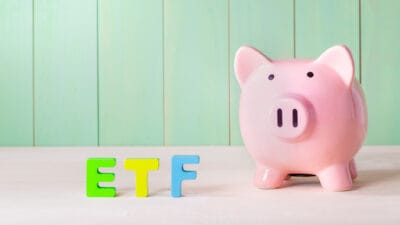The Vanguard Australian Shares Index ETF (ASX: VAS) is the most popular exchange-traded fund (ETF) on the ASX. At the end of February 2024, it was $14.7 billion in size.
The VAS ETF tracks the returns of the S&P/ASX 300 Index (ASX: XKO), which comprises 300 of the biggest ASX shares by market capitalisation.
Being popular doesn't necessarily mean it's the best investment, so I'm going to look at four key areas that could influence whether the VAS ETF is effective to own.
Fees
One of the best reasons to own almost any Vanguard ETF is that the fund manager offers its ETFs as cheaply as possible through low management fees. Lower fees mean more of the fund value stays in the hands of investors rather than lining the pockets of a fund manager.
The VAS ETF has an annual management fee of 0.07%, making it one of the cheapest ways to invest in ASX shares through a diversified portfolio.
On this measure, it gets a tick from me.
Dividend yield
Many ASX blue-chip shares have relatively high dividend yields thanks to the combination of a fairly high dividend payout ratio and trading at a relatively low earnings multiple. In other words, they pay out a lot of profit as a dividend and have a low price/earnings (P/E) ratio.
According to Vanguard, the VAS ETF has a dividend yield of 3.9%. Franking credits boost the cash yield.
For investors wanting passive income, I think the Vanguard Australian Shares Index ETF is a decent option for dividend yield.
Diversification
The VAS ETF invests in 300 different businesses, which is a lot of diversification in a single investment. It can lower the risk compared to owning just one company, whether it's Commonwealth Bank of Australia (ASX: CBA), BHP Group Ltd (ASX: BHP), Woolworths Group Ltd (ASX: WOW) or Telstra Group Ltd (ASX: TLS).
However, when we look at the sector allocation, the VAS ETF gives two industries more than 50% weighting, so I wouldn't say it's as diversified as it could be. At the end of February 2024, ASX financial shares had a weighting of 29.7%, while mining shares had a weighting of 22.4%. The big businesses in these sectors make up most of the allocations to those two sectors.
It's a positive for investors who want a large weighting in these sectors. However, some people may want a bigger allocation to sectors with more growth potential, such as technology or ASX retail shares. So, I'd give the VAS ETF half a tick for diversification.
Returns
The Vanguard Australian Shares Index ETF's return is simply the combined return of all of the different businesses it holds in its portfolio.
Since its inception in May 2009, the ETF has returned an average of 9.05% per annum. Of that return, 4.58% per annum was in the form of distributions, while 4.47% per annum was capital growth.
Those returns aren't terrible at all, but there are other ETFs that have performed better over the long term.
Foolish takeaway
I think VAS ETF is an effective way to get cheap exposure to ASX blue-chip shares.
However, from my perspective, it doesn't have as many capital growth prospects as some other globally-focused ETFs. So, I'd want to balance the Vanguard Australian Shares Index ETF with other options like Vanguard MSCI Index International Shares ETF (ASX: VGS).









